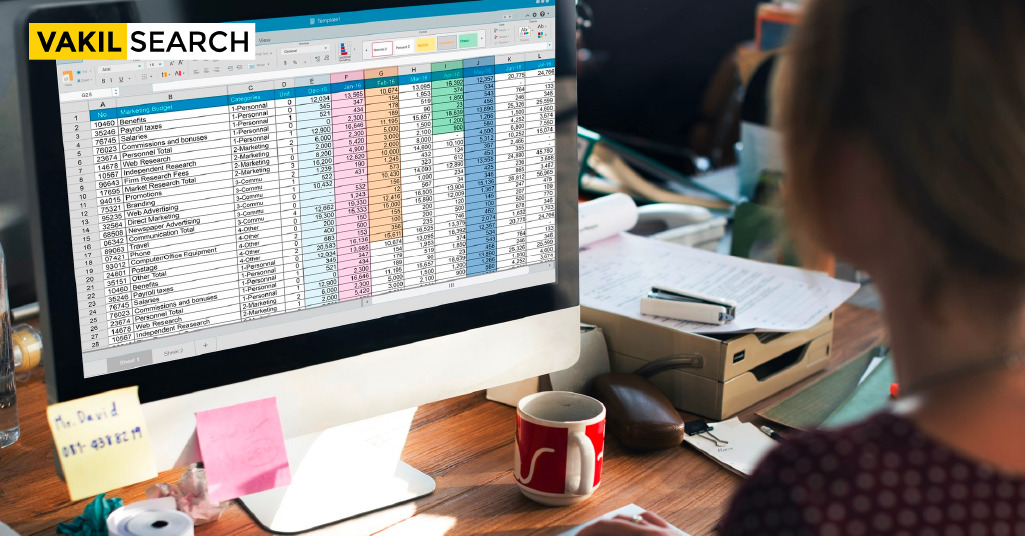The Employees' Provident Fund (EPF) calculator estimates how much money you will have earned by retiring from work.
The EPF, created by the EPFO of India, is a government-managed provident fund for employees, focusing on labor and employment issues. Both employees and employers contribute to this fund each month. If you are a current or former employee, you will receive this payment upon retirement or cessation of employment due to disability. To manage your contributions and benefits, it’s essential to calculate EPF accurately. The EPF is a retirement savings plan designed to help you save for the future.
This plan is appealing and beneficial since you contribute 12% of your Basic Salary each month, and your company matches your contribution. Specifically, 3.67 percent of your Basic Salary and DA goes toward your EPF, and 8.33 percent goes toward your EPS for 12 percent (Employee Pension Scheme). Your EPF account earns money based on the latest interest rate.
This article describes how EPF works, the latest interest rate on EPF, qualifying to become an EPF member in India, the benefits of EPF, and how to calculate EPF interest.
What Is an EPF?
Salary workers in the private sector can participate in a retirement savings program called the Employee Provident Fund. The EPF is administered by the Employees Provident Fund Organisation (EPFO). Employers with 20 or more workers are required to register with the EPFO. The Employees Provident Fund Organisation manages three programs.
- The EPF Scheme of 1952
- The Pension Act of 1995
- The Insurance Act of 1976
In FY2022, the interest rate on the EPF will remain at 8.1%. At retirement, the employee would receive a lump sum that considers the employee’s and the employer’s contributions and any interest charges. However, only 88% of the employer contribution goes into the employee’s EPF account. The employer contributes 8.33% of the total, the employee contributes 3.67%, and the remaining 0.03% goes to the EPF.
Eligibility for the EPF
The following are the requirements for the EPF include:
- Every business with more than 20 employees is required by law to register with the EPFO.
- When an employee’s monthly payment is less than ₹15000, they must enroll in EPF.
- Employees with salaries over the limit can join EPF with authorisation from the Assistant PF Commissioner and employer approval.
Why Do We Need an EPF Calculator?
To get an idea of how much money you can expect to have saved up in your EPF account by the time you retire, you can use a simulation tool like the EPF calculator. The total amount, including your employer’s contribution, and any interest earned, can be determined in one single sum.
Explain the Operation of an EPF Calculator
Let’s look at an example to learn how to use the PF Interest Calculator properly.
Employees receive ₹14,000 per month ( ₹13,000 base wage + ₹3,000 dearness allowance).
Employees’ portion of the EPF = 12% * ₹14,000 = ₹1,680
The EPF employer contribution is ₹514 (3.67% x ₹14,000).
The employer’s portion of EPS is ₹1,166 (8.33% of 14,000).
Total employer and employee EPF contribution = ₹1,680 + ₹514 = ₹2,194.
The rate for FY 2022-23 is 8.1%
So, the monthly interest rate is as follows:
8.1%/12 = 0.675%It is assumed that the worker started working for firm XYZ in April 2019. The total amount of April’s EPF payment will be ₹2,194. There would be no interest paid in April by the EPF system.
May’s total EPF contribution is ₹4,388 (₹2,194 plus ₹2,194). The interest payment is ₹4,388 multiplied by 0.70833% to get ₹31,08.
All subsequent months are also calculated in the same manner.
Guidelines for Using the EPF Tool
The following is the procedure for using the EPF tool.
- Use the slider to indicate your current age.
- Then, enter a monthly salary of up to Rs 15,000, including the base wage and dearness allowance.
- An employee’s required minimum contribution to the EPF is 12%. Increasing your VPF contributions will boost your percentage.
- Enter a retirement age between 58 and your current age.
- If you know the amount, include the current EPF balance.
- The EPF Calculator can help you estimate how much money you can expect to receive from the EPF when you reach retirement age.
Benefits of EPF Calculator
- Using the EPF Calculator, determine how much money you can put away for retirement. You can plan your other investments more effectively after you have a sense of your retirement fund.
- The EPF Calculator is available to you as a tool for increasing your retirement savings.
- Your EPF capital at retirement time can be calculated in a matter of seconds with the help of the EPF Calculator.
- You can use the EPF Calculator to prepare for retirement. You can raise the contribution rate if you desire to retire earlier than expected.
Contribution to the EPF
Employees and their employers contribute a portion of each paycheck to a particular savings account known as the Employee Provident Fund. The total amount donated is 12 percent of the worker’s base wage and dearness allowance. The minimum investment is ₹12,000 rupees. The EPF account receives the total of 12% employee contribution and a 3.67% employer contribution. At the same time, 8.33% is allocated to the Employee Pension Scheme.
If your base salary and discretionary allowance both amount to less than ₹15,000, here’s an example:
Mr X’s compensation is ₹20,000, his base salary is ₹14,500, and his Dearness Allowance is ₹5,000.
Employee Contribution: ₹1,800/- (12% x ₹15,000).
According to law, the 12% Employer contribution will be split between EPS and the Employee Provident fund. Even if the employee’s Basic plus DA is less than ₹15000, the employer contribution will be ₹15000.n Employer contributions: ₹15,000 * 3.67 percent = ₹550.50 and ₹15,000 * 8.33 percent = ₹1249.50.
If your base salary plus discretionary allowance is higher than ₹15000, here’s an example:
Mr X’s annual salary of ₹25000 (basic + DA) assumes the following conditions.
An employee’s portion would be ₹3000 (12 percent of ₹25000).
The average employer contributes ₹3000 per employee or 12% of pay. Under the law, ₹15,000 will determine earnings per share at 8.33% is ₹1250. If you subtract the EPF contribution from the total amount due (say, 3000), the resulting sum is ₹1750 rupees.
Conclusion
One of the most vital resources for preparing for retirement, EPF also offers competitive interest rates. You don’t have to worry about paying any taxes on it at all. It’s a great way to save money and time, and it’s supported by the government and includes a pension. After all, there won’t be much for you to do. Complete the necessary documentation and submit it to your company’s human resources or payroll department. As a result, you can join the program with little effort and receive many benefits. Please visit Vakilsearch for further assistance.
Frequently Asked Questions
What formula can be used in Excel to calculate the monthly EPF contribution?
To calculate monthly EPF (Employee Provident Fund) contributions in Excel, use the formula: =ROUNDUP(MIN(MAX(0.12*GrossSalary, 1800), 15000), 0) This formula ensures the contribution is between 1800 and 15000, capped at 12% of Gross Salary. Set up an Excel sheet with columns for Date, Gross Salary, Contribution Rate, Employer Contribution, Employee Contribution, and Total Balance. Use SUM and IF functions to calculate contributions and interest. Track EPF contributions monthly and update the Total Balance with compound interest accrued over time.
How do you set up an Excel sheet to track and calculate EPF contributions and interest accrued over time?
Excel can forecast EPF balance at retirement using the FV (Future Value) function: =FV(Rate, Nper, Pmt, Pv, Type) Where Rate is the annual interest rate, Nper is the number of years until retirement, Pmt is the monthly contribution, Pv is the present value (current EPF balance), and Type is 0 for end-of-period payments.
Can Excel be used to forecast the EPF balance at retirement? If yes, how?
Excel functions like SUM, IF, PMT, and FV are useful for EPF calculations. SUM aggregates contributions, IF manages conditions, PMT calculates monthly payments, and FV forecasts future EPF balances. Combine these functions to automate tracking, projections, and analysis of EPF contributions effectively.
What Excel functions are most useful for automating EPF calculations?
Excel functions like SUM, IF, PMT, and FV are crucial for automating EPF calculations. SUM aggregates contributions, IF manages conditions (like contribution caps), PMT computes monthly payments, and FV forecasts future balances based on interest rates and contributions. You can also try our EPF calculator online
How to handle errors or mismatches in EPF calculations using Excel?
To handle errors or mismatches in EPF calculations in Excel, use IFERROR and conditional formatting. IFERROR prevents formula errors from disrupting calculations by displaying custom messages or actions. Conditional formatting highlights discrepancies, aiding quick identification and correction of data inconsistencies.
How to integrate Excel with other software to automatically update EPF records?
Integrate Excel with other software to automate EPF records by using data import/export features or APIs. Establish data connections to fetch and update EPF information from HR systems or financial databases. Automated scripts or macros can streamline data synchronisation, ensuring accuracy and efficiency in managing EPF records across platforms.











